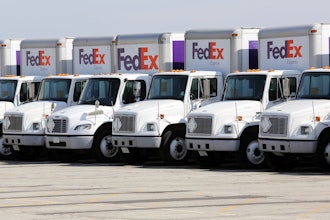Fuel, one of the most costly expenses for the trucking industry, is seeing major developments. Natural gas, which comes at a fraction of the cost of diesel at $1.50 less per gallon, has been introduced as an eco-friendly and cost effective way to keep the transportation industry above water. However, as with any great change, there are bumps in the road that slow down progress. For drivers, finding fueling stations that offer natural gas is almost as difficult as being able to afford a rig that has been fitted to run on that natural gas. Meanwhile, those in the management position need to find a fix for the fuel crisis.
Developments in the Natural Gas Industry
According to Logistics Viewpoints, the transportation industry has seen major developments in natural gas thus far in 2013. One of the road's most prominent haulers, UPS, has made plans to purchase 700 vehicles fitted for liquefied natural gas (LNG). UPS will also build four stations for refueling their LNG trucks, by 2014. To provide LNG filling stations for those using standard fueling stations, Shell and Travel Centers of America are planning to add at minimum of two LNG fueling lanes, plus a necessary storage facility, to at least 100 of the existing Petro Stopping Centers and TA travel centers located along the interstate.
Obstacles for Trucking Management and Drivers
Having the ability to pump LNG into suitable tanks is half of the battle. As of May 2012, the U.S. had 53 filling stations for natural gas. In comparison to the 157,000 gasoline stations, LNG is struggling to get out into the marketplace. It is estimated to cost approximately $60 billion to be able to construct enough LNG stations before truckers will have adequate availability. International Business Times notes that drivers will burn extra fuel and time on the road by attempting to locate the scarce number of LNG filling stations as they are now. Additionally, trucks need to be specially fitted to operate on LNG, at a cost of $40,000 to $80,000 more than what a standard truck costs. Furthermore, most truckers, especially those running independently, purchase their rigs used to save money. There are not any used LNG models on the marketplace, nor will there be for years to come.
Ideas for Fuel Management
While the race is on to see whether transportation companies will adopt LNG capable trucks or the fueling stations will become equipped to sell LNG first, those in the industry need a solution today. One of the most noted suggestions to combat the cost of fuel is through fuel management. Logistics companies can install EOBRs to monitor drivers' driving habits and the fuel usage stats of the rig itself. For instance, companies like Omnitracs sell tracking systems that allow drivers and owners to determine more fuel efficient routes, driving techniques and systematic changes that work to improve fuel efficiency. Until the transportation and logistics industry embraces the use of LNG, and while ready drivers wait for filling stations to be more accessible, fuel management technology offers the most cost effective solution.
Danielle M. writes on behalf of OmniTracs, Inc. She is a part time student at The Kelley School of Business studying supply chain management and marketing. She has a special interest in how green principles can apply to trucking and potentially make them more efficient. She enjoys studying how businesses have incorporated relatively small technologies like EOBRs that start huge, industry-wide changes.






















